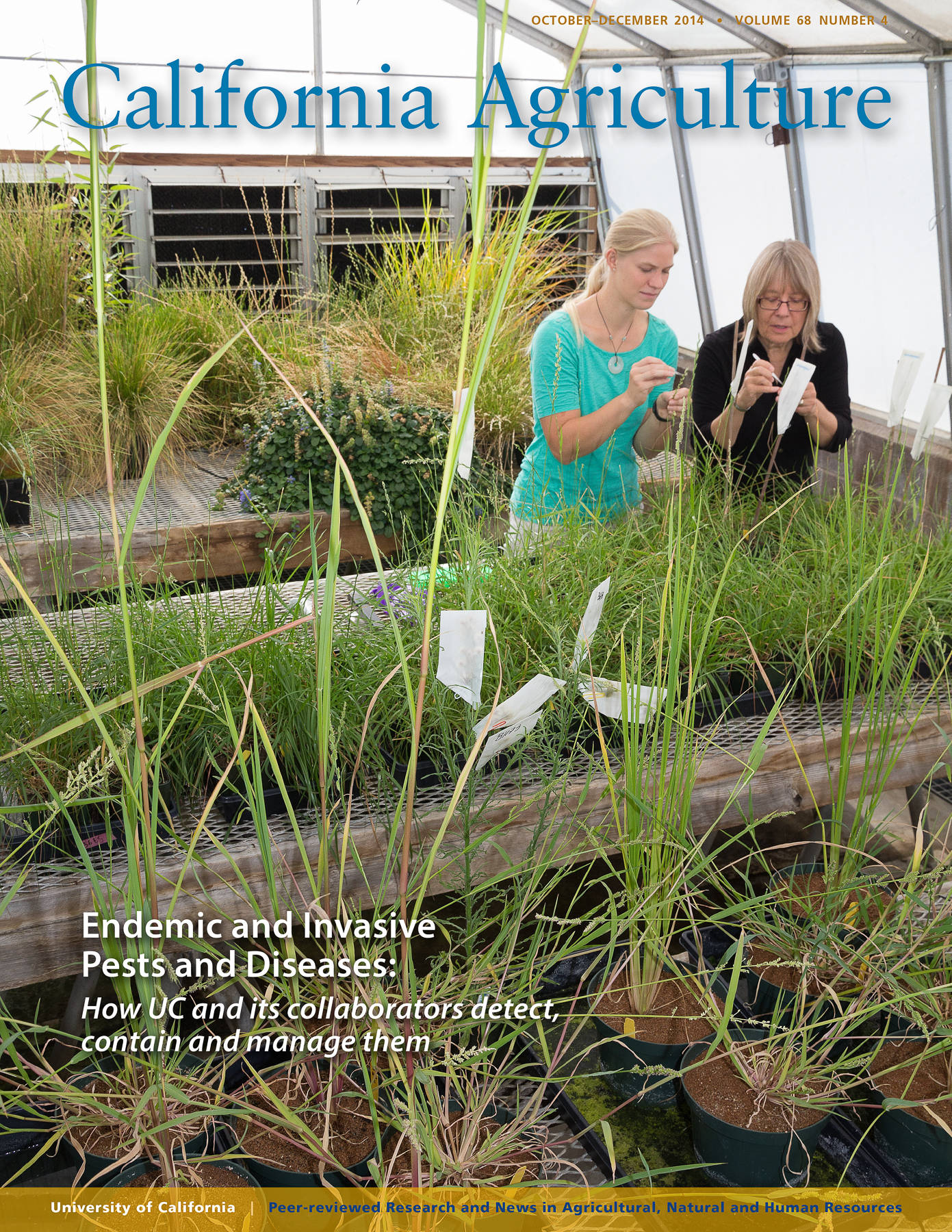Calag Archive
Calag Archive

Endemic and Invasive Pests and Diseases:
How UC and its collaborators detect, contain and manage them
Cover:
Across the United States, endemic and invasive pests are a growing problem that costs billions of dollars each year in direct damage and funding for pest management programs. In California, UC ANR researchers collaborate with state and federal agencies to contain and manage pests such as glassy-winged sharpshooter, European grapevine moth and herbicide-resistant weeds. In this photo, Elizabeth Karn, Ph.D. student (left), and Associate Professor Marie Jasieniuk (right) of UC Davis cross glufosinate-resistant Lolium (ryegrass) plants with glufosinate-susceptible plants to determine whether the resistance trait can be transmitted to offspring. The results of their research will help inform resistance management strategies. Photo by Will Suckow.
October-December 2014
Volume 68, Number 4
Volume 68, Number 4
News and opinion
General Information
CALIFORNIA MASTER GARDENER HANDBOOK, SECOND EDITION
Available from ANR


